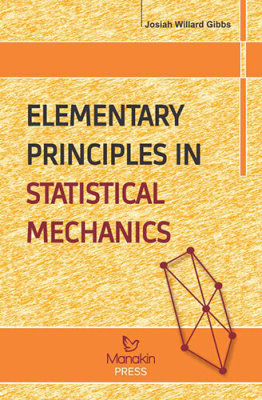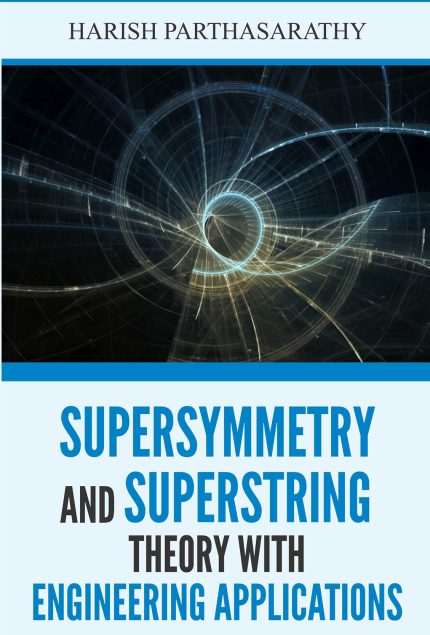P.J. Haler | A.H. Stuart | Category: Physics
Book Details
ISBN: 9789386677372
YOP: 2018
Pages: 248
Order also on
No policy could have a more sinister influence on progress or place such a final limit on the student’s actual usefulness in his vocation. If any of the great discoveries or inventions which have revolutionised civilisation be examined and tracked back to its source, we invariably find a man working in some apparently quite useless field of research, with no object in view other than the acquisition of knowledge. Utility never enters his head, for the stage of the work engaging his immediate attention is such that no living man is in a position to say what is “useful” and what is not. The useless of to-day may be of paramount importance to-morrow. When Volta in 1800 made his voltaic pile and obtained a feeble current of electricity, and Oersted in 1820 discovered the action of a current on a magnet; when Davy in 1821 demonstrated the power of a current to magnetise steel, and Faraday in 1831 showed that a current in one circuit could induce a current in another circuit, no one could foretell that these discoveries would lead to the production of a dynamo which, when rotated at Chelsea, could propel an electric train at Hampstead. The contemporaries of the pioneers just mentioned may have said to them: “This is all very interesting, but what is the use of it?” If they had answered: – “In less than a century these principles will enable a man in London to speak to a man in Paris,” they would have been laughed at. Again, we may note that great discoveries and inventions have seldom if ever been made by one man
SECTION I- THE PROPERTIES OF MATTER
I. UNITS.OF MEASUREMENT
II. PROPERTIES OF SOLIDS
III. PROPERTIES OF LIQUIDS
IV. PROPERTIES OF GASES
SECTION II- PERIODIC MOTION
V. SIMPLE HARMONIC MOTION
SECTION III— SOUND
VI. VIBRATION AND THE MUSICAL SCALE
VII. HARMONICS AND RESONANCE
VIII. VIBRATION OF REEDS AND GAS COLUMNS
SECTION IV- LIGHT
IX. PHOTOMETRY
X. REFLECTION
XI. REFRACTION
XII. IMAGES
SECTION V- HEAT
XIII. THERMOMETRY
XIV. EXPANSION OF MATTER BY HEAT
XV. SPECIFIC HEAT
XVI. LATENT HEAT
XVII. CONDUCTION, CONVECTION, AND RADIATION
XVIII. THE CONSERVATION OF ENERGY
No policy could have a more sinister influence on progress or place such a final limit on the student’s actual usefulness in his vocation. If any of the great discoveries or inventions which have revolutionised civilisation be examined and tracked back to its source, we invariably find a man working in some apparently quite useless field of research, with no object in view other than the acquisition of knowledge. Utility never enters his head, for the stage of the work engaging his immediate attention is such that no living man is in a position to say what is “useful” and what is not. The useless of to-day may be of paramount importance to-morrow. When Volta in 1800 made his voltaic pile and obtained a feeble current of electricity, and Oersted in 1820 discovered the action of a current on a magnet; when Davy in 1821 demonstrated the power of a current to magnetise steel, and Faraday in 1831 showed that a current in one circuit could induce a current in another circuit, no one could foretell that these discoveries would lead to the production of a dynamo which, when rotated at Chelsea, could propel an electric train at Hampstead. The contemporaries of the pioneers just mentioned may have said to them: “This is all very interesting, but what is the use of it?” If they had answered: – “In less than a century these principles will enable a man in London to speak to a man in Paris,” they would have been laughed at. Again, we may note that great discoveries and inventions have seldom if ever been made by one man
SECTION I- THE PROPERTIES OF MATTER
I. UNITS.OF MEASUREMENT
II. PROPERTIES OF SOLIDS
III. PROPERTIES OF LIQUIDS
IV. PROPERTIES OF GASES
SECTION II- PERIODIC MOTION
V. SIMPLE HARMONIC MOTION
SECTION III— SOUND
VI. VIBRATION AND THE MUSICAL SCALE
VII. HARMONICS AND RESONANCE
VIII. VIBRATION OF REEDS AND GAS COLUMNS
SECTION IV- LIGHT
IX. PHOTOMETRY
X. REFLECTION
XI. REFRACTION
XII. IMAGES
SECTION V- HEAT
XIII. THERMOMETRY
XIV. EXPANSION OF MATTER BY HEAT
XV. SPECIFIC HEAT
XVI. LATENT HEAT
XVII. CONDUCTION, CONVECTION, AND RADIATION
XVIII. THE CONSERVATION OF ENERGY












Reviews
There are no reviews yet.